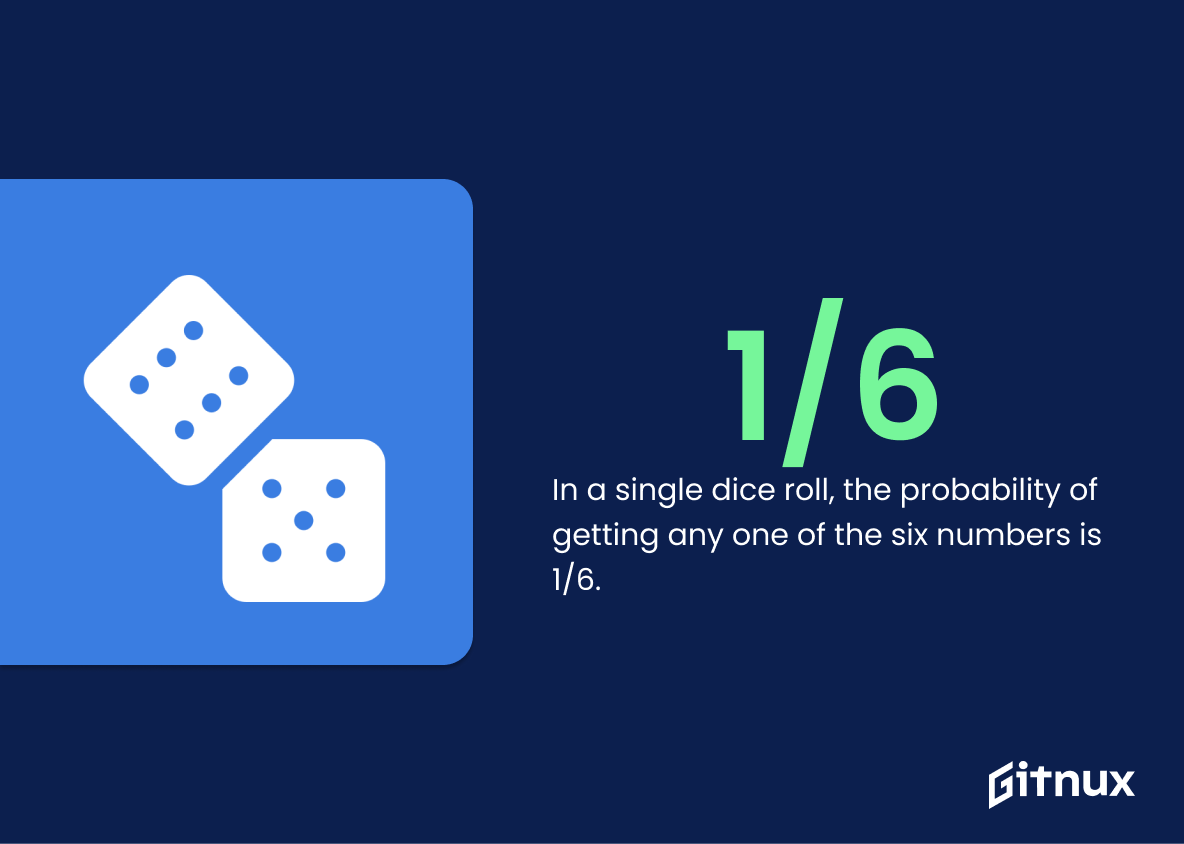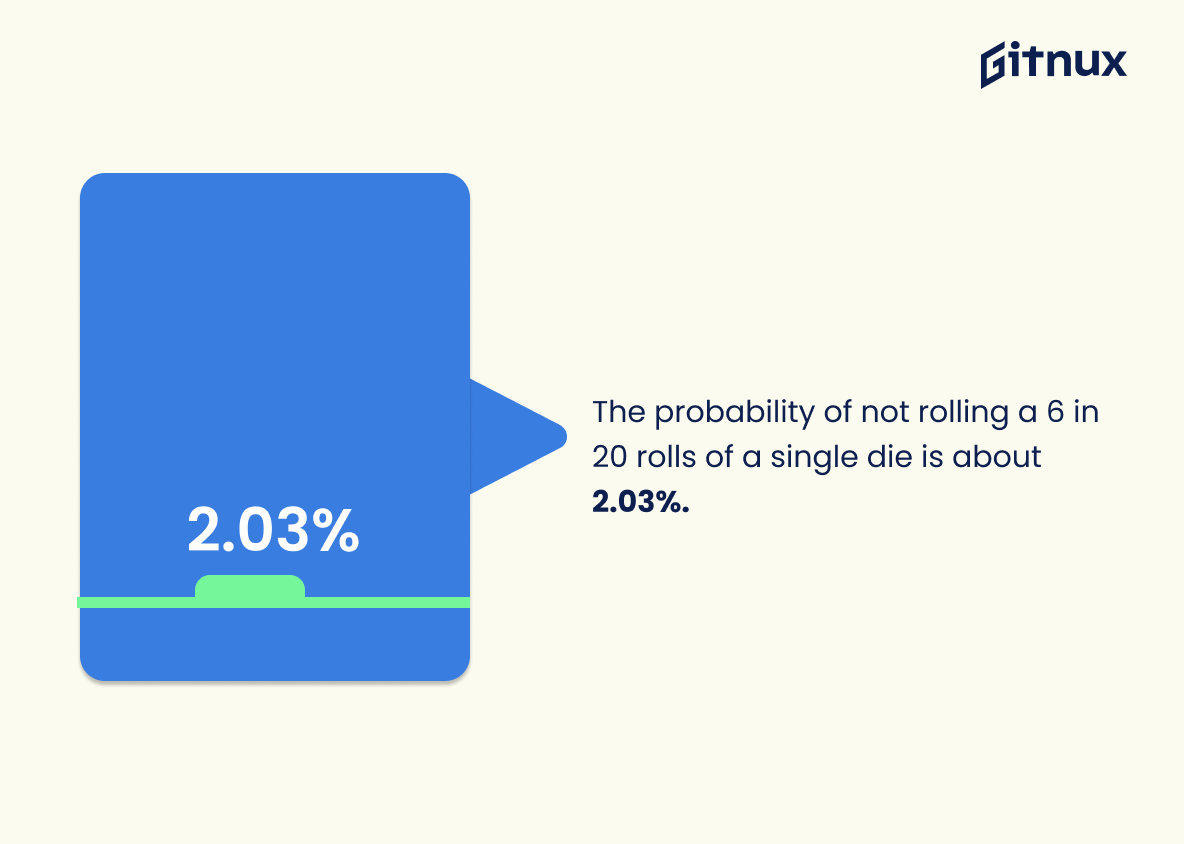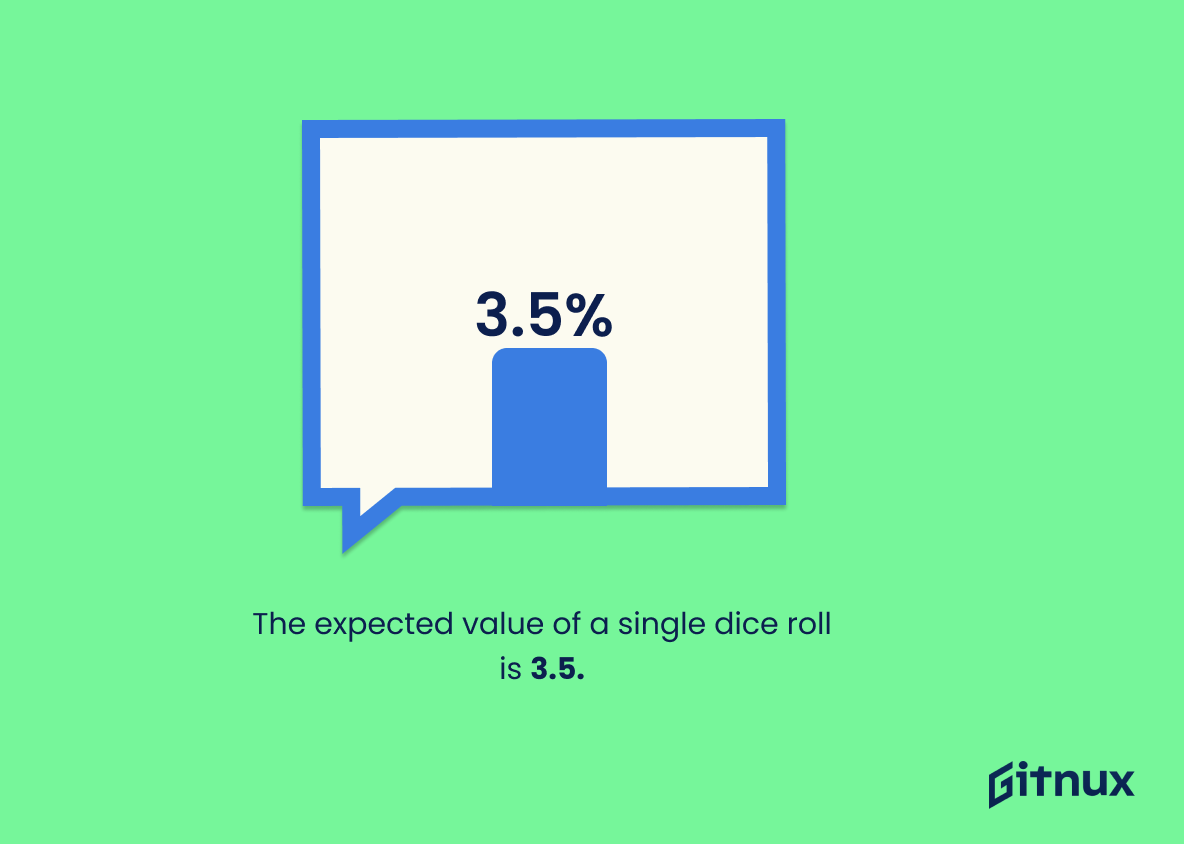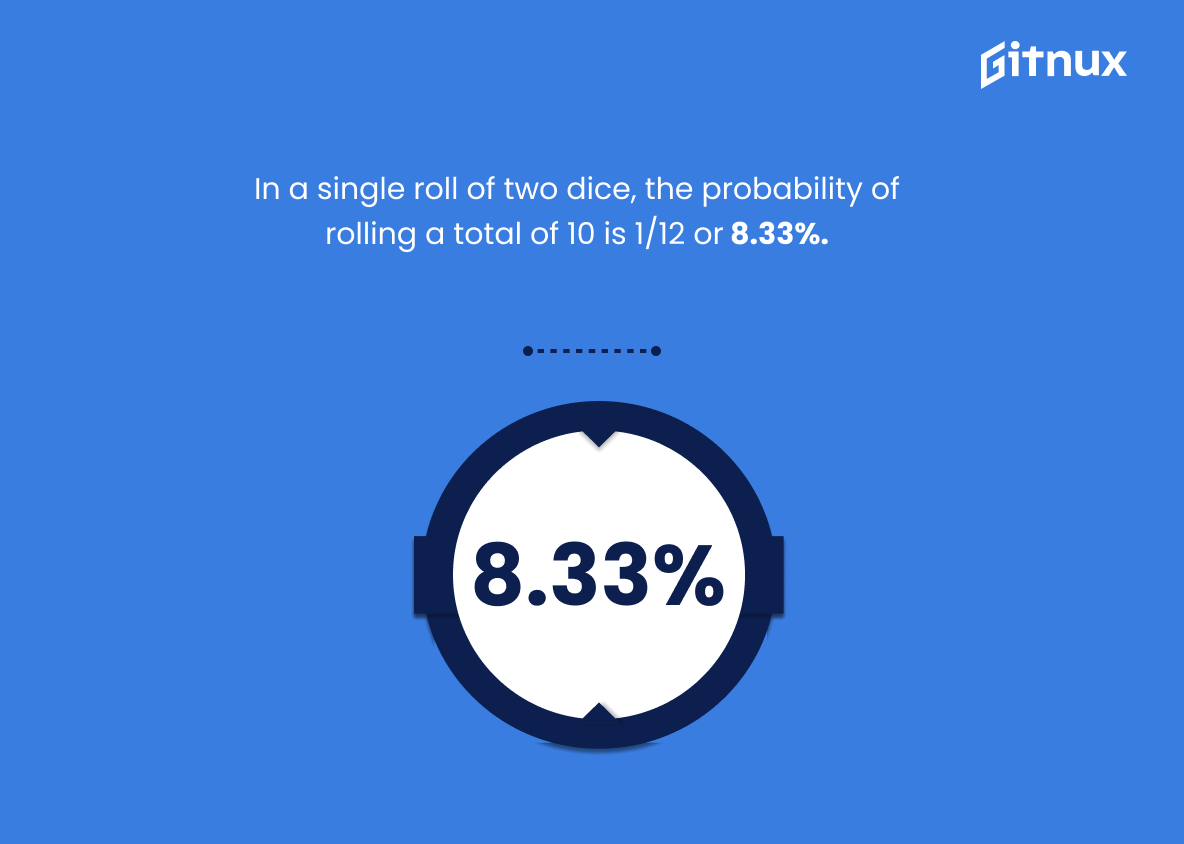Unravel the intriguing world of chance and probability with us as we delve into the fascinating realm of dice roll statistics. A simple roll of the dice can indeed carry a wealth of information and implications that go far beyond a casual game of Monopoly or Risk.
Whether you’re a mathematics enthusiast, a game developer, an aspiring data analyst, or a board game aficionado, understanding dice roll statistics can add a new layer of insight and strategy to your perspective. So, let’s embark on this journey of discovery together and uncover the hidden mathematical treasures that lie within a seemingly innocuous act of rolling dice.
The Latest Dice Roll Statistics Unveiled
In a single dice roll, the probability of getting any one of the six numbers is 1/6.
Understanding the statistic that a single dice roll has a 1/6 probability of landing on any one number serves as a foundation in the fascinating world of dice roll statistics. It ignites the exploration into random behaviour, probability and chance. It’s like learning your first chord on the guitar or mastering the basic ‘kick, stroke, breathe’ rhythm in swimming: it unveils the mathematical harmony behind every dice roll.
In a broad sense, anyone can roll a dice and take a chance, but harnessing the knowledge of statistics allows us to peel back the veneer of randomness and stare probability in its face. As readers delve into a blog post on dice roll statistics, this statistic increases their comprehension of more complex scenarios.
It empowers them to make strategies in dice-related games, calculate odds and even predict outcomes within a certain margin. Knowing this simple 1/6 probability is both an eye-opening entry point and an essential touchstone as we venture deeper into permutations, combinations and probabilistic systems that rule every dice roll.
The probability of rolling a 6 with two dice is 5/36 or 13.89%.
Delving into the heart of Dice Roll Statistics, the intriguing element of chance finds a testament in the statistics – ‘The probability of rolling a 6 with two dice is 5/36 or 13.89%’. It dances on the edge of probability, serving as a potent exemplification of the unpredictability woven into every toss of the die.
Engaging this statistic at the forefront of the discussion underpins the fundamental concept of probabilities in the realm of dice games. It serves as a focal point for anyone hoping to decipher the potential occurrences within a dice roll, and their respective likelihoods. Peeling back the layers of chance, the blog post, hence, shines a light on calculated aspects of what is otherwise only perceived as a game of luck. The 13.89% probability captures this balance eloquently – opening a fascinating window to a world wherein luck can be dissected, understood, and navigated with a degree of accuracy.
Moreover, this statistic subtly educates readers about the intensity of each dice roll’s outcomes and enhances their appreciation of the game. Challenging one’s understanding of the odds, this statistic stands as a testament to the allure of probability – making the blog post more enriching and engaging for the readership.
There are 36 possible outcomes when rolling two dice.
Immersing ourselves in the vibrant world of Dice Roll Statistics, the arresting fact that 36 varied outcomes exist when tossing two dice adds a thrilling level of complexity. It’s like the heartbeat of our statistical analysis – without it, assessing probabilities becomes a far less stimulating endeavor. In the vast, unpredictably fun fairground that is a dice game, these 36 outcomes are the individual rides, each holding a unique set of odds. Suddenly, one roll isn’t a simple flick of the wrist but a ticket into a whirlwind of potential results and numbers to crunch.
The probability of not rolling a 6 in 20 rolls of a single die is about 2.03%.
Delving into the fascinating complexities of dice roll outcomes, the focus goes beyond just the 1 in 6 chance of rolling a six on a single roll. Consider the relatively slim possibility of about 2.03% of not rolling a 6 even once in 20 attempts. This surprising insight tells two compelling tales.
Firstly, it highlights the intriguing nature of probability. With each roll, your chances of not rolling a six slightly dwindle, culminating in a rather miniscule percentage over 20 tosses. This demonstrates that each roll, while independent, contributes to an overall probability landscape that can be incredibly varied and rich.
Secondly, understand that this statistic underscores the power of repetition. Even a highly unlikely event, such as rolling a specific number on a die, can become probable if given enough opportunities. Indeed, over 20 tosses the fact that there’s only a 2.03% chance of not rolling a six, means there’s a whopping 97.97% chance of rolling a six at least once.
The beauty of dice roll statistics then is that it unravels the surprising scenarios just under the surface and emphasizes the hidden dynamism in a simple act of rolling a die.
The average value you get when you roll a die is 3.5.
Delving deeper into the intriguing realm of dice roll statistics, the aforementioned statistic radiates significance; an average roll value of 3.5 acts as an unexpected yet revealing beacon of clarity. It epitomizes the figure that emerges when balance is struck among all possible outcomes (1 through 6). Thus, instead of favoring any single landing side, the humble cube inherently leans towards this decimal mid-point.
Further, this 3.5 average opens a gateway to the probabilistic labyrinth, circumventing luck, and offering us the means to anticipate outcomes. From gaming strategies, gambler’s fallacies, to chaos theories and randomness—this statistics unveils a fascinating crossroad where mathematics and chance coalesce in a six-faced die.
Rolling three dice, the probability of obtaining a sum of 5 is 6 out of 216, or 2.78%.
Navigating the realm of Dice Roll Statistics, one stumbles upon intriguing insights such as the probability of obtaining a sum of 5 when rolling three dice, which is a mere 6 out of 216, translating to a minimalist 2.78%. The allure of this intel draws from its potential to impact decision-making in gaming strategies, probabilistic studies, and predictive models.
This slender chance presents a fascinating twist, stirring curiosity and challenging assumptions, thus making it a valuable nugget in our expansive exploration of dice roll possibilities. Notably, it underlines the unpredictability encapsulated within the ostensibly simple act of rolling dice, illuminating the broad range of outcomes that even the most seemingly mundane actions can generate. This vibrant illustration further amplifies the charm of statistical unpredictability present in everyday life scenarios.
The expected value of a single dice roll is 3.5.
Dipping into the realm of dice roll statistics, it’s intriguing to note that the expected value of a single dice roll is 3.5. It’s not simply a figure plucked out of sheer randomness, but a powerful testament – a statistical lighthouse guiding us through the diverse landscape of possibilities a dice roll presents. Such an expectation fuelled numerical profile illuminates our understanding of chance, stirring up the turbulent yet fascinating stew of decisions and outcomes in dice-oriented games.
Use this enlightening nugget as your number-cruncher in navigating the riveting twists and strategies, altering the course of your gameplay as subtly as a dice roll. Hence, 3.5 serves as more than just a number, it’s a deterministic compass strategically pointing towards the probability of each outcome.
When three dice are thrown, there are 216 possible outcomes.
In the realm of dice roll statistics, consider the statement ‘When three dice are thrown, there are 216 possible outcomes’ as the guiding compass for researchers and enthusiasts. This number acts as the magical key that opens the door to an intricate world of possibilities – each outcome, a unique story painted in numbers. Every individual outcome has a tale to tell, from the probability of rolling a perfect triple to the likelihood of a particular sum.
This treasure trove of 216 possible outcomes forms the basis of any analysis. Letting us delve into an array of fascinating questions, it fuels a deeper understanding of methodologies behind data, odds, and outcome prediction, which could resonate with the readers of a blog post about Dice Roll Statistics. Hence, it’s the bedrock on which the majestic castle of dice roll statistics is built.
The probability of getting an even number on one roll of a dice is 1/2.
Visualize a dice; each face displaying a distinct number from one to six. In trials where this cubical puzzle is thrown, an intriguing pattern emerges. Exactly half the outcomes, namely two, four, and six, are even-numbered, making the odds of rolling an even number precisely 1/2. This numerical subtlety has resonant implications for the dice-rolling enthusiast and math whiz alike.
This 1/2 probability serves as a grounding point, an inevitable occurrence in the capricious world of dice rolls. It’s a beacon of predictability within the bell curve depicting an unpredictable sequence of outcomes. This characteristic loop of order inside randomness embellishes our understanding of underlying mathematical principles, adding a flavor of certainty to the theater of chance.
In the realm of dice roll statistics, it ignites the discourse on probability, laying foundation while encouraging further exploration into more complex patterns and probabilities. Whether we’re forecasting the possible outcome of a board game, or predicting large scale phenomena based on probability, this statistic primes us for decision-making by presenting a clear, undisputed mathematical truth.
In a single roll of two dice, the probability of rolling a total of 10 is 1/12 or 8.33%.
Dive into the fantastical world of dice rolling, and one number seems to hold exceptional sway — 10. Artfully crafting a narrative from the raw world of probability, we find that a total of 10 springs to life on a mere single roll of a pair of dice with an 8.33% chance or 1/12 probability. This seemingly innocent statistic offers a glimpse into the intriguing universe of outcomes, holding significant implications.
For those attempting to decode the mysteries of dice rolling, this statistic acts as a guiding star. Whether you’re designing a board game, understanding the dynamics of a dice-based casino game, offering educational insights into probability theory or simply indulging your curiosity, this 8.33% chance represents the subtle play of fortune that embodies the chance games we play.
This fact, therefore, adds another level of depth and intricacy to our understanding of dice rolls. What seems like a mere game of chance becomes a dance of numbers where even a slight change can swing the pendulum of outcomes significantly. Indeed, knowing the statistics of rolling a 10 can alter your chances of success, keep you on guard within game strategy or provide interesting narrative hooks for those exploring the stochastic symphony of dice rolls.
The probability of rolling a total of 3 on two dice is 2/36 or 5.56%.
Drawing attention to the precise likelihood of rolling a total of 3 on two dice, which stands at a subtle 2/36 or 5.56%, dots the landscape of the fascinating world of dice roll statistics. It serves as a lighthouse, illuminating the role of probability in determining outcomes, and sprinkles stardust on the importance of number theory in everyday games of chance.
When playing dice-related games, such as backgammon or monopoly, this slender probability percentage can offer players critical tactical guidance. Indeed, understanding such probabilities can shift the outcome from sheer luck to strategic gameplay, marking the difference between amateur dice-rollers and the seasoned dice duelists. It’s a testament to the fact that numbers, caution and strategy, rather than raw chance, often dominate the table when the dice are rolled.
The probability of rolling the same number on three rolls (like three 1’s) is 1/216 or 0.46%.
Immersing ourselves in the exhilarating world of dice roll statistics, we plunge into probabilities, probabilities that unveil intriguing likelihoods and outcomes. Take, for example, the surprising fact that rolling the same number thrice, like rolling three 1’s, is not as common as one may think. It happens only 1 in 216 times, or in percentage terms, a mere 0.46%.
Now, isn’t that fascinating? Why so? Here’s the punchline. This alluring statistic serves as a stark reminder of the inherent unpredictability and randomness of dice. In the vast pool of possible outcomes, the chance of hitting that specific sequence of three identical numbers is like finding a needle in a haystack.
In a labyrinth of rolling dice, whether for academic curiosity, gaming intrigue or even for another rousing game of Dungeons and Dragons, this nugget of information becomes a fascinating tidbit. It highlights the element of chance, the thrill of the unpredictable, and the sheer joy of statistics in understanding our world, even if that world is as small as a dice.
The likelihood of rolling a prime number (2, 3, 5) on a six-sided die is 50%.
Unveiling the suspense of dice roll game lies at the heart of our fascination with these tiny cubes. The mentioned statistic – ‘ The likelihood of rolling a prime number (2, 3, 5) on a six-sided die is 50% ‘ – is not merely a number, it’s a narrative. This percentage tells a riveting tale of probabilities, weaving the prime pattern on a six-sided die, and stirring a sense of balance on the rolling luck.
It spotlights how rudimentary mathematics, like prime numbers, interacts with the randomness of the rolling die, framing a beautiful symphony of probability at play. As you navigate through the labyrinth of dice roll statistics, this delightful fact of 50% chance to roll a prime bolsters your understanding and engagement, challenging your assumptions and strategies on every toss of the die.
The chance of rolling a total of 11 with two dice is 1/18 or 5.56%.
In the provocatively unpredictable world of dice roll statistics, the spellbinding figure of a 1/18 probability, or a tantalizing 5.56% chance, of rolling a sum of 11 captures the essence of the risks and thrills involved. This specific statistic stands as an enigmatic sentinel, serving as a vivid illustration of the delightful uncertainty inherent to the simple act of tossing two dice. By unveiling the elusive odds of reaching 11, this statistic invites enthusiasts to dabble in the captivatingly complex universe of probability, thereby enriching their grasp over the mystifying dynamics at play in dice games.
The median value when rolling a six-sided die is 3.5.
Bedazzling the readers with the allure of numbers, the stated statistic, ‘The median value when rolling a six-sided die is 3.5,’ twinkles like the North Star guiding our understanding about the world of dice rolls. Drawing from the bosom of mathematical probability, it reveals the heart of not just averages, but also the middle ground; the point where half the outcomes are likely to be higher and half are likely to be lower.
In reality, you can’t roll a 3.5 on a die. But, within the theater of statistics, it’s a reminder that uncertainty straddles both sides of the median fence and that the world of dice is not constricted to whole numbers. This inquisitive revelation makes this ‘median’ statistic a fascinating actor on the stage of blog posts about Dice Roll Statistics.
The odds of rolling a 7 with two dice is 1 in 6 or 16.67%.
Unveiling the mystery behind dice rolls, it’s fascinating to dive into the heart of probability. With the statistic ‘The odds of rolling a 7 with two dice is 1 in 6 or 16.67%’, we meander into the realm of unpredictability, yet the precision of statistics.
Chances are, you’ve played a board game with dice and never thought about the math behind the roll. Yet, therein lies the allure of this statistic. It aligns with the fundamental reason why people are drawn to games of chance. Intriguingly, the number 7 is the most probable result with two dice, elevating its mystical historical importance in different cultures.
Moreover, understanding this percentage – 16.67% – equips us with deeper insight for strategies in games such as Craps or even Monopoly – sharpening our competitive edge all thanks to the statistical science hidden inside playful dice games. It’s like revealing a secret weapon in the realm of gameplay, a tip that might just tip the scale in your favor once you roll the dice.
This is more than a dicey situation – it’s a powerful dance with probability, where mathematical facts color our perception of the game. Our dice statistics post flips this game of chance into a game of statistically-informed strategy. So next time, rather than leaving everything to fate, you might just whisper a confident salute to the number ‘7’, unearthing the exciting connection between statistics and fun.
Conclusion
In conclusion, the symphony of numbers and probabilities behind a simple roll of dice is undeniably fascinating. Dice roll statistics isn’t just a game of chance; it’s a journey into the heart of probability, unpredictability, and luck. We’ve delved into the patterns, possibilities, and the profound effects of statistical mathematics that govern a deceptively simple act.
Whether you’re a game designer looking to balance the probabilities in your favor, a player seeking to increase your chances of winning, or simply a curious enthusiast, understanding dice roll statistics can give you a definite edge. Remember, the game isn’t only about the roll of the dice but rather how you leverage the probabilities. Roll the dice, play the odds, and may the statistics always be in your favor.
References
0. – https://www.www.wyzant.com
1. – https://www.www.dummies.com
2. – https://www.www.livescience.com
3. – https://www.math.stackexchange.com
4. – https://www.mathworld.wolfram.com
5. – https://www.math.answers.com
6. – https://www.sites.google.com
7. – https://www.onlinestatbook.com
8. – https://www.stattrek.com
9. – https://www.www.bbc.co.uk
10. – https://www.www.thoughtco.com
11. – https://www.www.cut-the-knot.org
12. – https://www.en.wikipedia.org















